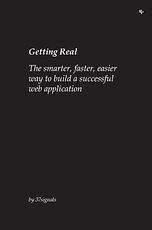DESIGN PROCESS
Before working on any new project, it is best to start with the question: is it worth doing?
But how do we decide what's worth doing?
By asking the right questions.
My process closely parallels the double diamond design method. I begin each project (professional and personal) by testing the theorized problem I'd like to solve by analyzing the target audience, its current behaviors, and then I formulate a set of expected results based on the analysis-informed action plan.
By taking these steps, we can get away from subjective nice-to-have's and move towards objective necessities.

1. OBSERVE
Step 1 is to validate the problem by collecting as much information as possible about your users; how they currently solve the assumed problem, what motivates them to solve it, what gaps there are in their solutions, how they would prioritize improvements, etc.
-
Competitive Analysis
-
Surveys
-
User Interviews
-
Metrics Tracking
2. ANALYZE
After collecting data, the next step is to organize all of it into comprehensive stories about the target user based on themes and patterns. We also take time here to establish success metrics. But if the user story isn't clear, then back to data collection we go until the problem to solve is focused.
-
Card Sorting
-
Data Visualization
-
Thematic Analysis
-
Personas & User Stories
3. DEVELOP
Once a defined problem statement is formed from analysis, it's time to lay the foundation for a designed solution. This begins by using content hierarchy as a structural base, and then developing that into a layout which then adopts an aesthetic approach.
-
Information Architecture
-
User Journeys & Flows
-
Wireframing
-
Prototyping
4. TEST
With a prototype ready, it is time to test. In most cases, user testing is already happening throughout the design stage to inform iterations. Depending on the project, we either launch, test, then iterate, or we will test prior to launch until we see positive success metrics.
-
A/B Testing
-
Usability Testing
-
Feedback Surveys
-
QA/QC
INSPIRATION
It's important to me not only to apply the above method to my work, but also to the method itself. I'm always looking for new resources to improve my process by seeing how others with more experience are approaching their work. Below are just a few titles that have been instrumental in honing my work & life philosophies.

Getting Real

Talking to Humans

Essentialism

How I Built This